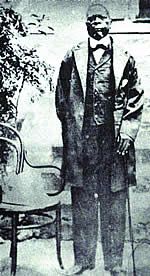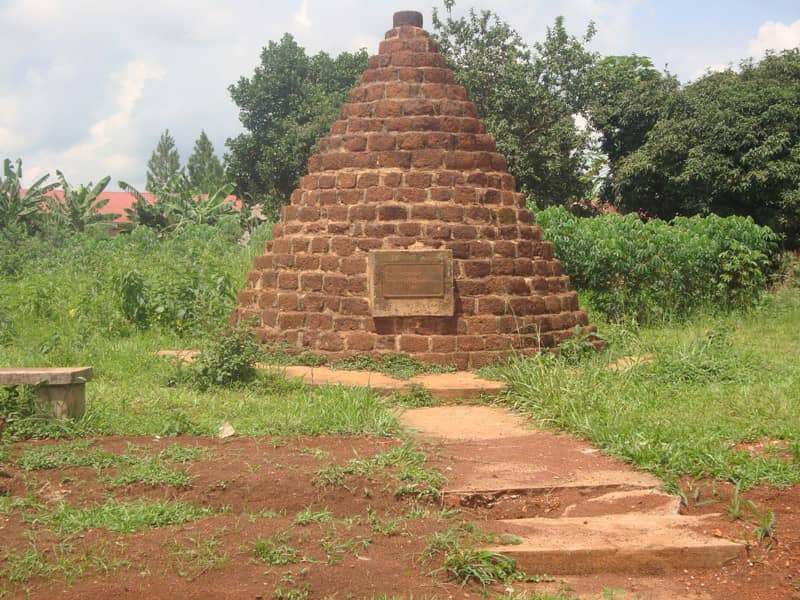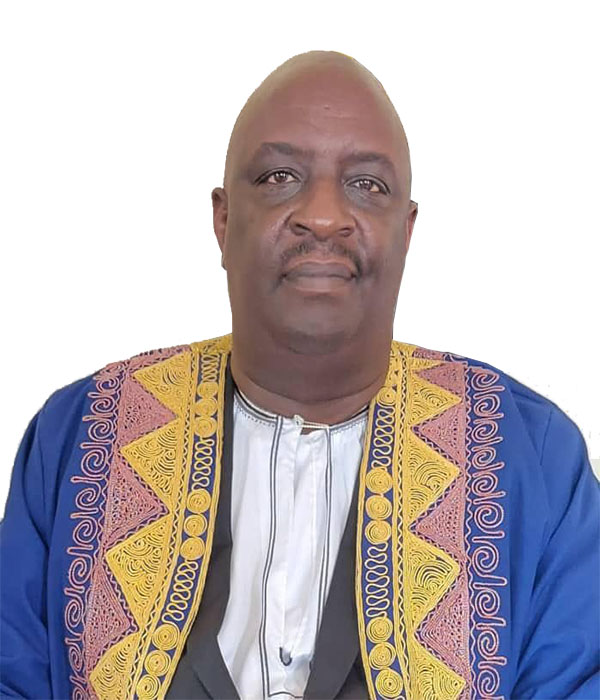- April 6, 2020
- Posted by: Communications
- Categories: Latest News, Our History
No Comments

Article extracted by Owek Mugerwa Francis from BKK archives
Chwa II Kabaleega died on 6th April 1923 as he was returning to Bunyoro from exile in Seychelles islands where he had been imprisoned.
He died at Mpumudde hill in Jinja district. The site where he rested before his death has to-date been preserved as a cultural site.
Before any Kyabazinga of Busoga is installed, he has to pay homage to Mpumudde hill where specific rituals are performed on him.
It is worth remembering that the reigning King of Bunyoro Dr Solomon Gafabusa Iguru I, a grandson of Kabaleega is the one who installed the current kyabazinga William Wilberforce Kadhumbula Nadiope IV in September 2014.
After the death of Kabaleega, his body was carried by his four Nubian Askaris from Mpumudde via Kamuli and Masindi Port up to Hoima.
He was buried at Mparo 26 days after his death.
When he was crowned king, he set out to develop his new empire via trade and especially the Kibiro Saltworks.
He defeated the British and the Ottomans who sought to colonise his empire.
On 1 January 1894, the British declared war on Bunyoro. At the height of the British offensive on his empire, Kabalega went into hiding in Acholi under the protection of Chief Awich Abok of Payira. It’s from there that he consistently led his rebellion dubbed Nyangire that proved a thorn on the colonial skin.
Kabaleega is a celebrated hero who fought against British colonialism.
He was born on June 18, 1853 to Omukama Kamurasi Mirundi Rukanama rwa Kanembe KYEBAMBE IV of Bunyoro-Kitara. (It is worth noting that the reigning King of Bunyoro shares a same birthday with Kabaleega).
His mother was called Kanyange Nyamutahingurwa Omunyonzakati Abwooli.
Kabaleega ascended the throne in 1869 at the age of 16 as the 23rd Omukama from the Babiito Dynasty following the death of his father.
He chose the throne name CHWA II after Omukama CHWA 1 Ente-Nkore Rumoma-Mahanga whose stories inspired him as a child.
He was also later named Yohana (John) upon being baptised in captivity.
Kabaleega led a historic revival of the kingdom and registered several victories in reclaiming lost territories, increased food production, cattle keeping and trade given that Bunyoro was the centre of iron smelting at that time, and had the Kibiro Salt Works.
He was a war genius. His blacksmith, who had acquired the art of duplicating European guns, manufactured for him his famous “Bagwigairebata” gun.
He resisted the British attempts to colonise his kingdom.

In June, 1872 Kabaleega defeated Sir Samuel Baker at Masindi frustrating his attempt to annex Bunyoro and the entire Lake Victoria region to the equatorial province of Egypt.
In 1888 Kabalega backed Prince Kalema of the neighbouring Buganda kingdom, and attacked Mengo and forced Kabaka Mwanga II to desert his capital and flee to Bulingugwe Island. Kalema ruled Buganda for 1 year before Mwanga II returned.
Kabaleega was deposed in 1898 after a rumour initiated by him spread that he had died mysteriously. That’s when the British installed his son Yosiya Kitehimbwa as king of Bunyoro. He had wanted to use the rumor to reorganize his troops for a fresh fight against the British.
On April 9, 1899, Kabalega was shot by the British, who captured him and the anti-imperialist Mwanga II of Buganda, who had been deposed by the British and had become allied to Kabeleega.
They were captured at Kangai site in the present day Dokolo district.
Kabaleega was exiled to the Seychelles for 24 years.
After being deposed, his son Kitehimbwa was appointed king but had little power as the kingdom was administered nearly directly by the colonial authority.
In science and innovation, according to R.W Felkin (a medical missionary), in 1879 Kabalega’s Bunyoro was the only place in the world where Caesarean section was performed to save both mother and baby. In other areas, the mother’s life was sacrificed for the child.
Further during Kabalega’s reign Bunyoro discovered a cure for sleeping sickness and Bunyoro’s citizens used to be immunised against endemic syphilis.
Kabaleega’s heroics are widely remembered in Bunyoro and Africa in general.
Many institutions have been named after him in honour of his heroics.
The Banyoro invoke the name Kabaleega in a period of challenges and celebration. We use a slogan Kabalega Leega to emulate his strength and courage.
On 8 June 2009, Kabaleega was declared a national hero of Uganda by President Museveni. In his bush war,
The reigning King of Bunyoro Dr Solomon Gafabusa Iguru I is a grandson of Kabalega.
Ends




